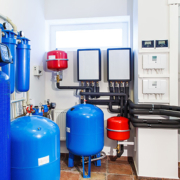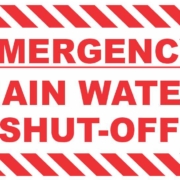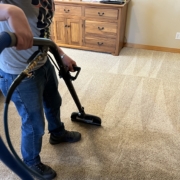Discovering frozen pipes that lead to flooding in your home or business can be a stressful situation, but taking prompt and appropriate action is crucial. Here are the steps you should take if your pipes freeze and cause flooding:
1. Turn Off the Water Supply:
– Locate your main water shut-off valve and turn it off immediately. This will stop the flow of water and prevent further damage. It’s essential to know the location of this valve beforehand, so take the time to familiarize yourself with it.
2. Assess the Situation:
– Evaluate the extent of the damage. Identify areas where water has spread and assess the potential risks, such as electrical hazards or structural damage. Exercise caution, and if there is any doubt about safety, evacuate the premises and wait for professional assistance.
3. Contact a Professional Restoration Service:
– Call a water damage restoration service, like American Restoration, immediately. Professionals have the expertise and equipment to handle water damage effectively. They can assess the situation, mitigate further damage, and develop a plan for restoration.
4. Document the Damage:
– Take photos or videos of the affected areas before you begin any cleanup. This documentation can be valuable for insurance claims. Make a detailed list of damaged items and structural issues caused by the flooding.
5. Remove Standing Water:
– If it is safe to do so, use a wet-dry vacuum, buckets, or towels to remove standing water. The goal is to minimize the amount of water in the affected areas. Be cautious of electrical outlets and appliances, and avoid using electrical equipment in wet areas.
6. Open Windows and Doors for Ventilation:
– Increase ventilation to aid in the drying process. Open windows and doors to promote air circulation and help reduce humidity levels. This can be particularly important in preventing mold growth.
7. Begin Drying Out the Space:
– Use fans and dehumidifiers to expedite the drying process. Focus on affected walls, floors, and any items that have been exposed to water. Ensure proper ventilation to prevent the buildup of moisture.
8. Dispose of Damaged Items:
– Remove and dispose of irreparably damaged items. This includes furniture, carpets, and other materials that cannot be salvaged. Be sure to document these items for insurance purposes.
9. Inspect and Repair Frozen Pipes:
– After addressing the immediate water damage, assess and repair the frozen pipes. If you’re unsure about how to do this, or if the damage is extensive, consult with a licensed plumber.
10. Review and Update Preventive Measures:
– Once the immediate crisis is resolved, review and update your preventive measures. Consider adding insulation to exposed pipes, especially those in attics, basements, or crawl spaces. Implementing preventive measures can help avoid similar issues in the future.
Remember, when dealing with water damage, safety should be the top priority. If you’re uncertain about any aspect of the cleanup or restoration process, seek professional assistance to ensure the job is done thoroughly and safely.









